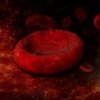Blood vessel spasms occur when small vessels in the body, usually in the extremities such as toes and fingers, narrow and constrict, preventing blood flow to the affected region of the body. Doctors do not fully understand the cause of blood vessel spasms, but they are usually a result of a disease known as Raynaud's syndrome. Raynaud's syndrome typically is diagnosed between the ages of 15 and 40 and affects women nearly five times more often than men. Blood vessel spasms and Raynaud's syndrome usually are easy to control and treat by preventing situations and elements that cause attacks.
Symptoms
Intense blood vessel spasms can restrict blood flow to entire sections of the body. During a blood vessel spasm attack, the region of the body where blood flow is restricted will become pale and eventually will turn gray, blue, purple or an ashy white. Body parts that are affected during the attack may become cold and painful. Blood vessel spasms can last from a few minutes to a few hours with repeated attacks possible during attack time periods. Blood vessel spasms can occur in the tip of the nose, the cheeks, the tongue, the nipples, the fingers and the toes.
Types
There are two types of Raynaud's syndrome conditions that involve blood vessel spasms. Primary Raynaud's syndrome is a result of physical and environmental triggers such as stress, cold temperatures and jobs that involve exposure to vibration. Secondary Raynaud's syndrome is a result of an additional disease that has already developed in the body, such as lupus or rheumatoid arthritis.
Causes
Exposure to very cold temperatures causes a majority of blood vessel spasms. Your body decreases blood supply to body extremities in order to maintain core temperatures. Those who suffer from Raynaud's syndrome have an exaggerated response to cold temperatures, which triggers blood vessel spasms. Emotional stress causes similar symptoms in the body as exposure to extreme cold temperatures and also provokes blood vessel spasm attacks. Recent research suggests that exposure to regular vibrations, such as drilling or pounding and even typing, may trigger blood vessel attacks.
Treatment
A cure for blood vessel spasms and Raynaud's syndrome is not known, but blood vessel spasm attacks usually can be prevented and treated by removing stressors that cause the attacks. Attacks as a result of exposure to extreme temperatures can be prevented by wearing appropriate clothing, and jobs that aggravate the disease may be replaced with jobs that do not trigger blood vessel spasm attacks.
Considerations
Although the root cause of Raynaud's syndrome has yet to be fully understood, those who suffer from either type of Raynaud's syndrome are believed to have genetic links to the disease. Many patients suffering from blood vessel spasms and Raynaud's syndrome have family members with a history of the syndrome.
Writer Bio
Tiffany Fowlkes has worked as a writer, editor and graphic designer for more than five years. She has served as a contributing staff writer, editor and graphic designer for a publishing company in the travel industry. Fowlkes holds a bachelor's degree in English and art from Sul Ross State University.
Image Credit
Photo courtesy of Stock.Xchng




